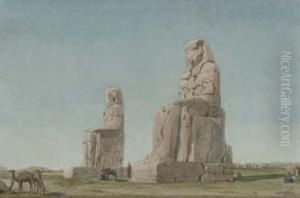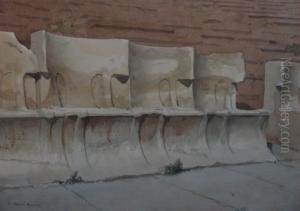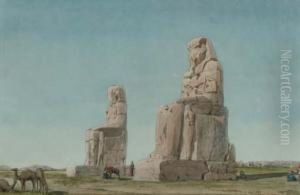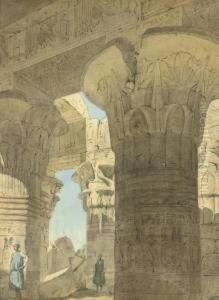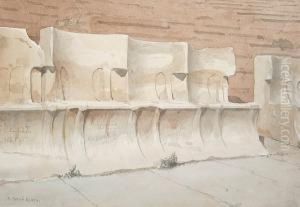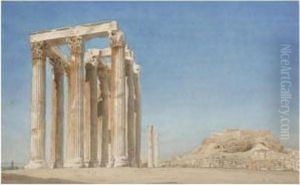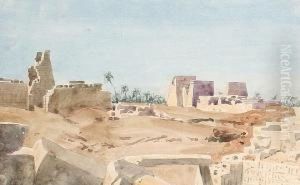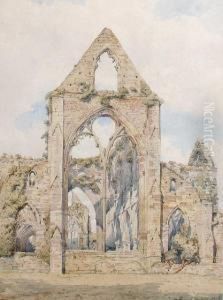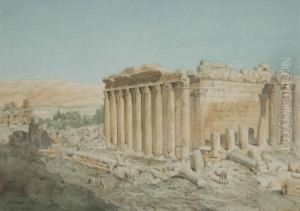Richard Phene Spiers Paintings
Richard Phené Spiers was a distinguished British architect, watercolourist, and academic. Born in 1838, Spiers developed an early interest in architecture and art, which would guide his career and contributions to the field. His education and early work were deeply rooted in the architectural traditions of the time, but he is most celebrated for his contributions to the understanding and teaching of architectural history and design.
Spiers' career was marked by a significant academic involvement. He served as the Master of the Architectural School at the Royal Academy of Arts in London, a position through which he influenced a generation of architects. His approach to teaching was innovative for its time, emphasizing the study of historical styles and the importance of drawing and watercolour techniques in the understanding of architectural concepts. This pedagogical approach not only enriched the curriculum but also instilled in students a profound appreciation for the artistic aspects of architecture.
In addition to his academic role, Spiers was an accomplished watercolourist. His works, often depicting architectural subjects, were celebrated for their detail, accuracy, and aesthetic beauty. Spiers travelled extensively, and his travels informed his art and teachings. He was particularly influenced by the architecture of the Mediterranean and the Middle East, regions that featured prominently in his watercolours and academic studies.
Spiers was also deeply involved in the architectural community of his time. He was a Fellow of the Royal Institute of British Architects (RIBA) and contributed to various architectural publications and societies. His writings and lectures on architectural history and theory further established his reputation as a scholar and educator.
Richard Phené Spiers' legacy is multifaceted. As an architect, he contributed to the design of several notable buildings, though it is his work as an educator and artist that has left a lasting impact on the field of architecture. His emphasis on the historical and artistic dimensions of architectural education helped shape the curriculum of architectural studies in Britain and beyond. Spiers passed away in 1916, leaving behind a rich body of work that continues to inspire architects, historians, and artists.
